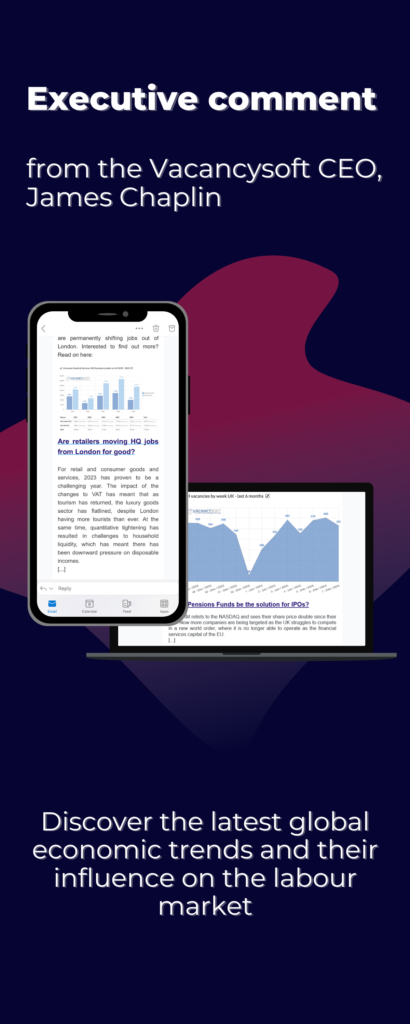
As the UK moves past the pandemic, the life sciences industry is still adjusting to the challenges associated with the post-Brexit regime. This, combined with the slowdown in trials during the pandemic, has resulted in a slowdown in recruitment within the sector, particularly affecting regulatory affairs professionals.

VC funding into the technology industry is on the rise again, bringing relief to policymakers. In the UK, FinTech is a major beneficiary of this increased investment, which is directly translating into heightened recruitment activity. FinTech stands out as the best-performing segment within Financial Services this year. If the current pace of recruitment continues, the number of FinTech vacancies in 2024 will be 36.7% higher nationwide compared to last year.

Analysis shows that SAP vacancies are projected to decrease by 34.1% in 2024 compared to 2023 (comparatively, in the 2022 to 2023 data analysis, vacancies decreased by 2.1%). Similarly, regional SAP vacancies are on track for two consecutive years of decline. This trend decline in SAP hiring reflects the broader slowdown impacting the technology sector as it adapts to the transition to a more rigid financial discipline.

The surge in vacancies for banking lawyers during Q1 2024, observed both in law firms and banks, reflects significant industry dynamics. 137 vacancies were posted within law firms, marking the highest total since Q3 2022. Extrapolating from Q1, 2024 is projected to see a 35% increase compared to the previous year. Similarly, there was a 17.7% increase in legal vacancies within banks compared to Q4 2023.

With the slump in the pharmaceutical sector set to continue, the long-awaited reforms to the MHRA have yet to materialise. As a result, drug approval in the UK lags behind the EU, further depressing the sector. 2023 seems to be the low point in that there has been an uptick in Q1 so far, and if this continues, it will increase by 9.1% this year compared to last. The recovery has been in London specifically, with volumes up 26.1% on last year.

The Government’s Spring 2024 budget has changed the shape of taxation in the UK for high net-worth individuals who are not UK-domiciled. The implications of this change are yet to be seen properly; therefore, when looking at the recruitment patterns, we are forecasting an increase in tax vacancies this year compared to last year’s 32% in London, and 46% regionally.








